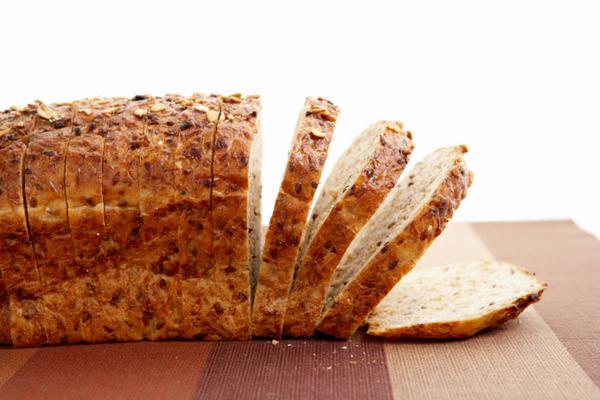How to Count Carbs and Lower Cholesterol
 Carbohydrate counting (aka “carb counting”) is most often prescribed for diabetics. However, when following a carb counting diet you can make choices to promote lower cholesterol levels, reducing heart disease risk.
Carbohydrate counting (aka “carb counting”) is most often prescribed for diabetics. However, when following a carb counting diet you can make choices to promote lower cholesterol levels, reducing heart disease risk.
What is carb counting?
Carb counting is used to control blood glucose levels. The goal with carb counting is to keep your intake of carbohydrates consistent from meal to meal, day to day. To be clear, with carb counting, you count the number of carbohydrates consumed, not the number of calories.
A carb counting diet is prescribed for diabetics depended on insulin, because insulin dosage is determined by the number of carbohydrates consumed.
Foods containing carbohydrates
Most foods contain carbohydrates, with the exception of fats and fresh meats. You need to refer to food labels frequently to know how many carbohydrates are contained in one serving and what equals one serving.
Carbohydrates are found in….
- Bread
- Pasta
- Crackers
- Cereal
- Rice
- Fruits
- Fruit juices
- Vegetables (especially vegetables high in starch, like potatoes, corn, and peas)
- Sweeteners like honey, molasses, sugar, and syrup
- Dairy products (i.e. cheese, milk, yogurt)
- Desserts and candy
How to count carbs
The carbohydrate content of food is measured in grams. Fifteen grams of carbohydrates is equal to one carbohydrate serving. Let’s say you are allotted 300 grams of carbohydrates daily. Three hundred grams of carbohydrates equals 20 carb servings (300/15 = 20). You would divide these 20 servings equally between meals and snacks throughout your day.
For example, you may choose to consume 6 carb servings with breakfast, lunch, and dinner for a total of 18 carb servings. This leaves you two carb servings for your afternoon snack.
Here are a few examples of foods containing 15 grams of carbohydrates, equaling 1 carbohydrate serving:
- One small apple, peach, orange or banana
- ½ cup applesauce
- 2 Tbsp raisins
- 1 cup milk
- 1 cup yogurt
- ½ cup corn, peas, potatoes, or squash
- 3 cup lettuce
- 1 slice bread
- 1/3 cup rice or pasta
- ½ cup cooked cereal
- 1 ½ cup unsweetened puffed cereal
- 6 saltines
- 8 animal crackers
Learning to carb count may be challenging at first. It’s important to measure all foods you consume until you become familiar with the appearance of a serving size on your plate. When reading food labels, you’ll find carbohydrate content per serving is not always perfectly divisible by 15, which means learning the range of carbohydrates allowed for calculating one serving, and you must learn to calculate carbohydrate content of foods you prepare. There are general guidelines for various foods to assist you as you implement carb counting.
How to boost intake of high fiber carbs to reduce heart disease risk
Living with diabetes increases your risk for heart disease. Following a high fiber diet is one step you can take to promote lower cholesterol levels, blood sugar control, and reduced heart disease risk.
The Dietary Reference Intake (DRI) for men is 38 grams of fiber daily and women 25 grams daily until the age of 50. The DRI for men over the age of 50 drops to 30 grams of fiber daily and women to 21 grams daily.
Dietary fiber is partially digested, which means consuming a diet high in fiber can help “offset” your carbohydrate intake. For foods containing 5 grams or more of fiber per serving, subtract half the fiber grams from total carbohydrate grams per serving before calculating total carbs.
For example, one slice of 100% whole wheat Fiber One bread contains 23 carbohydrates and 7 grams of dietary fiber. Based on carbohydrates alone, one slice of this bread equals 2 carb servings. However, it’s a high fiber food. So, you can subtract 3.5 grams (ie half the fiber content per serving) from 23, dropping the carbohydrate content to 19.5, which makes this high fiber bread equal one carb instead of two.
Additional high fiber foods include…
- Split peas
- Lentils
- Black and lima beans
- Chickpeas
- Whole grain pasta
- Oatmeal
- Brown rice
- Quinoa
- Bran flakes
- Barley
- Raspberries
- Blackberries
- Coconut
- Figs
- Artichoke
- Broccoli
- Avocados
- Turnip greens
- Green peas
- Acorn squash
- Okra
- Brussel sprouts
- Pear or apple with the skin
Most Americans consume less than half the recommended amount of dietary fiber daily. Consuming a diet high in fiber is only one way to promote healthy cholesterol levels and reduced heart disease risk. For further guidance, access the free e-course How to Lower Cholesterol in 8 Simple Steps at http://lowercholesterolwithlisa.com.
All the best,
Lisa Nelson RD
Health Pro for HealthCentral



